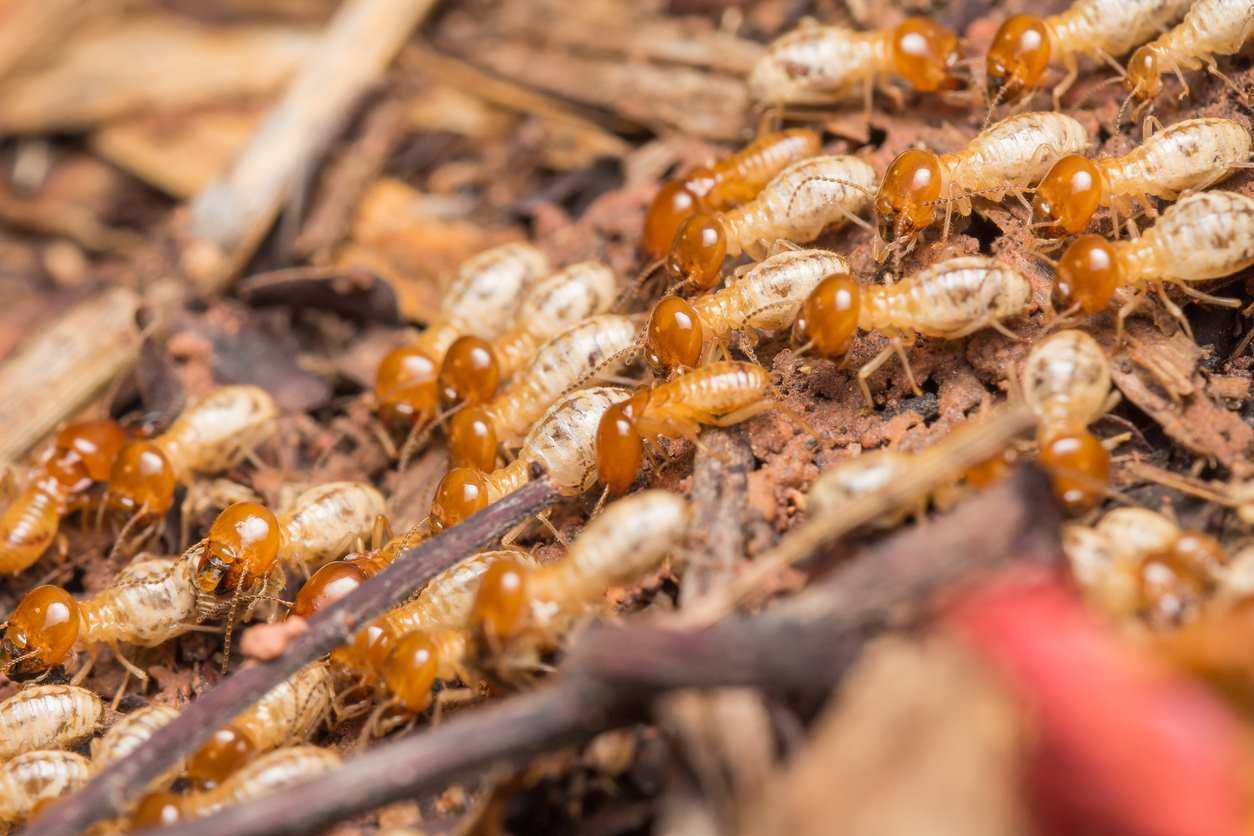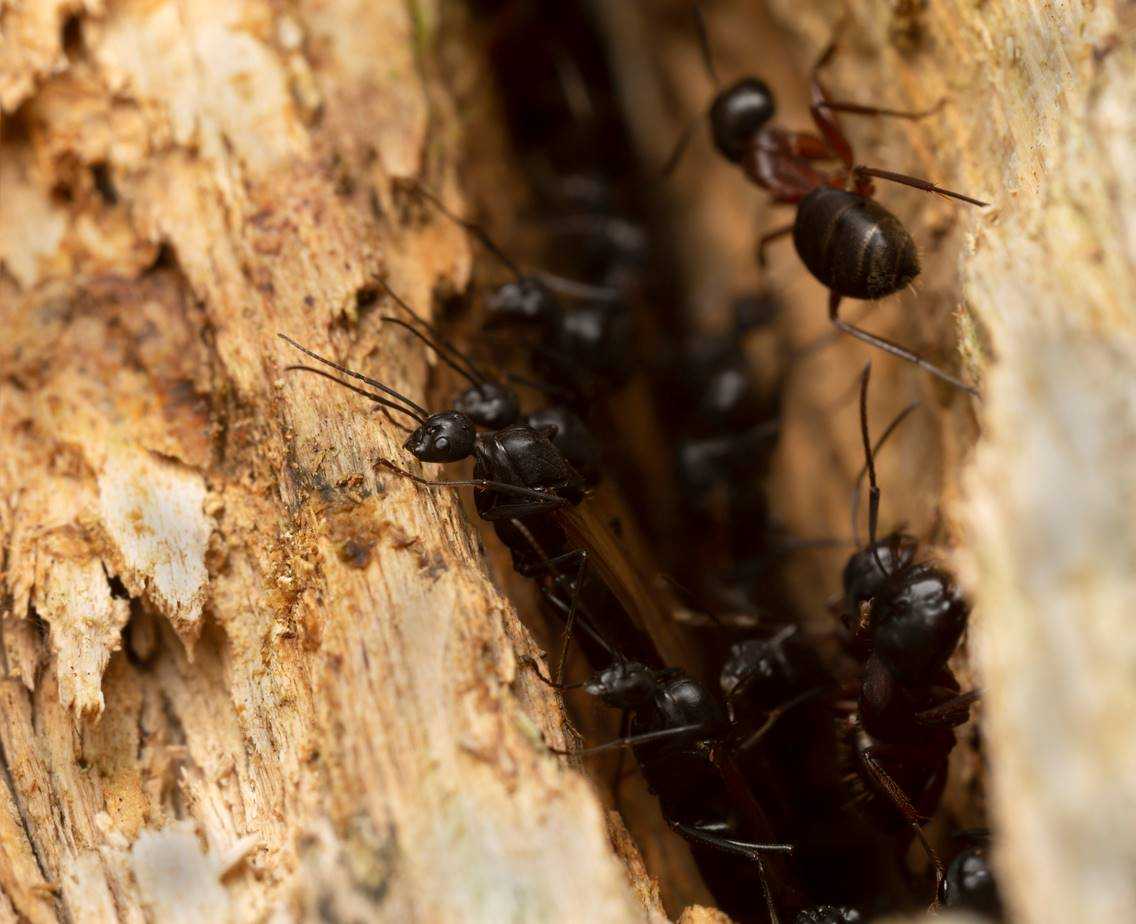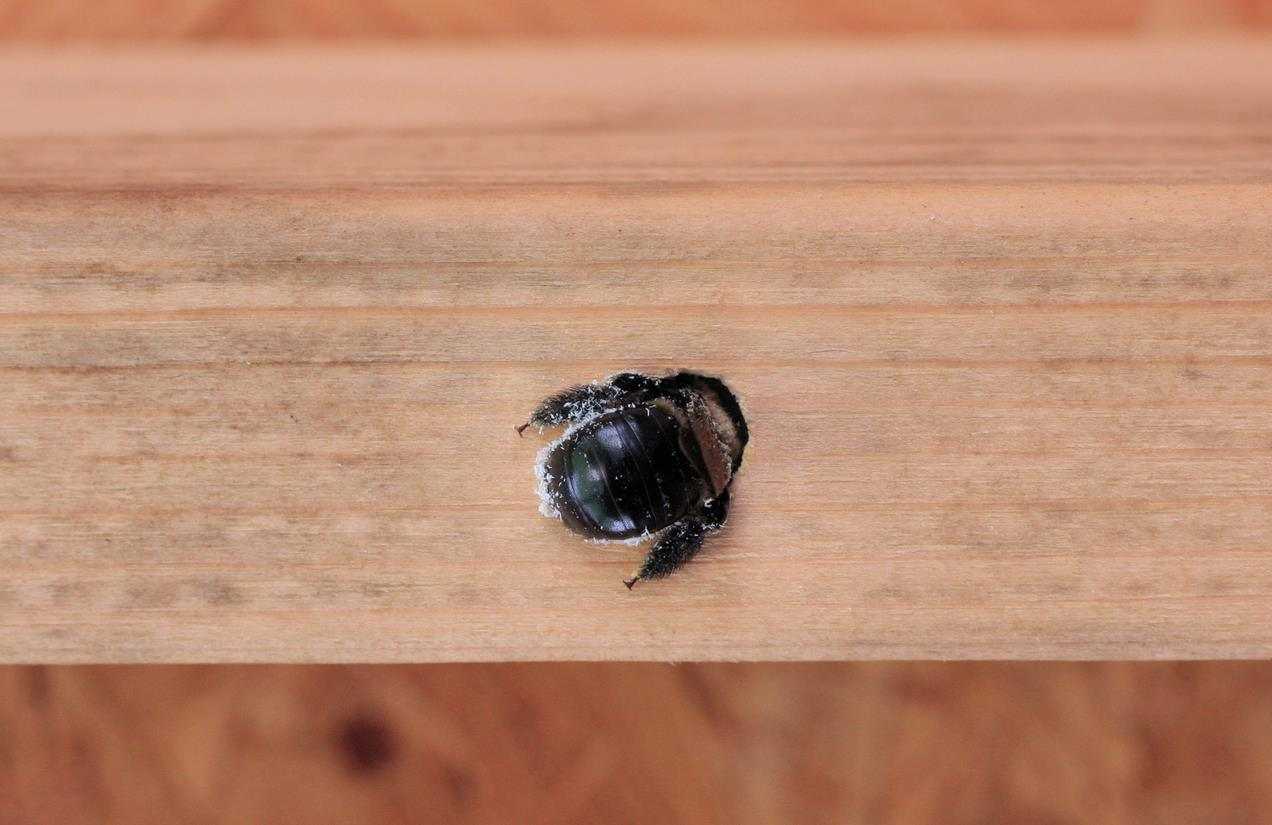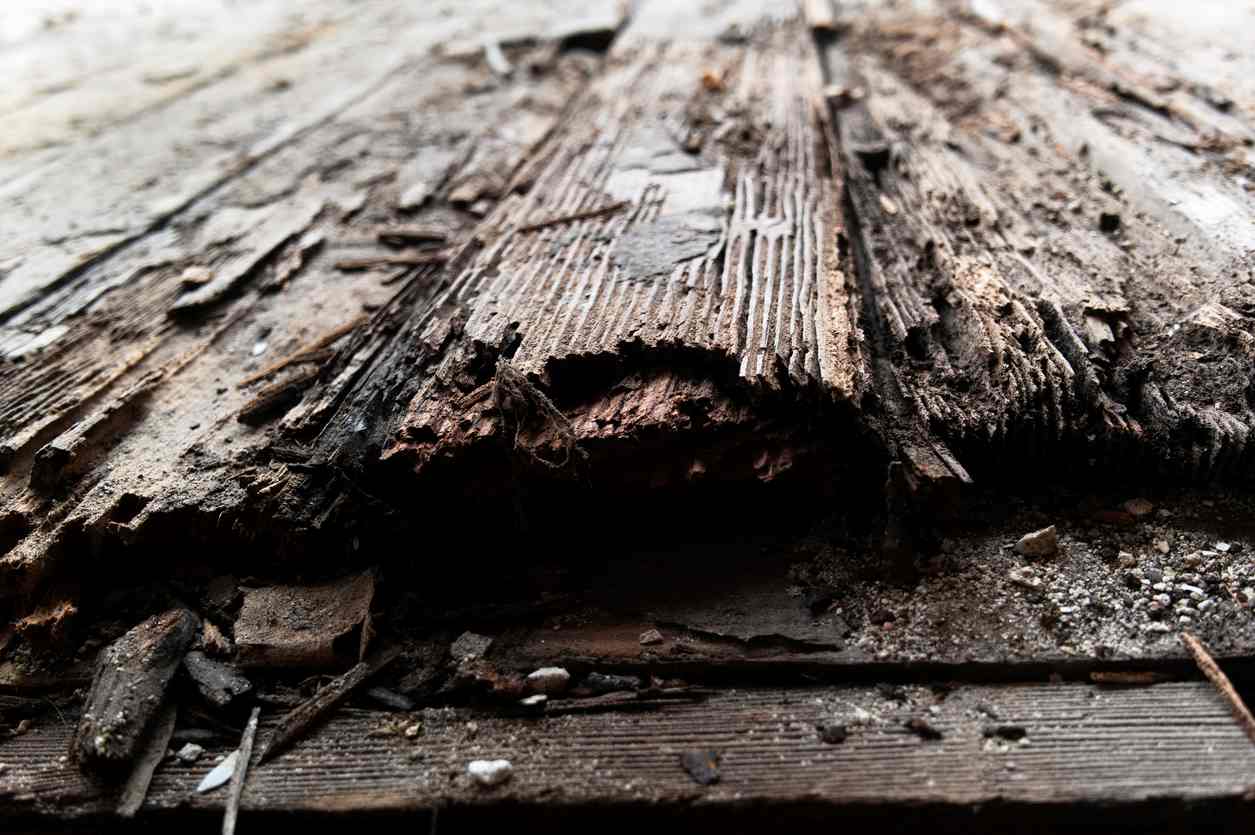Spring is coming. Soon, the world around us will begin to bloom. Storms will roll in on dark thunderclouds, and the colors of the world around us will once again become bright and vibrant.
If you’re looking forward to warmer weather, you’re not alone. Pests will be gearing up for their favorite season as well.
Spring is the busy season for many pests, including those that are known for the damage they can cause to your home. Pest damage isn’t just unsightly—it can be hazardous and expensive to repair.
With the changing of seasons right around the corner, the expert service specialists at PURCOR Pest Solutions™ know just what to be on the lookout for, and we’re eager to share with you our knowledge of the most damaging pests we encounter and the property damage these pests can cause.
Termites

It should come as no surprise that termites are at the top of our list. Termites have a bad reputation for a reason: They’re one of the most destructive pests you can have in your home. Termites make their way into the structure of your home and feast on the wood inside. They’re stealthy, hardy, and they can rapidly grow in number, all of which makes them tough to eliminate.
Termites are responsible for some of the most expensive property damage caused by pests, and repairing termite damage can cost you hundreds or even thousands of dollars, depending on how large the infestation grew and the extent of the pest damage.
When are termites the most active?
Termites are the most active in the spring and summer. Activity is often associated with the termite swarming season. Different species of termites swarm at different times, with spring being the most popular time, often on a warm day following rainfall.
Termites swarm when a colony has grown to a certain size and is ready to expand. If you see swarming termites in or around your home, they’re the reproductive members of a nearby colony, which can be an indication of a termite infestation you weren’t previously aware of.
What are the different types of termites?
Termites fall into three main categories:
- Subterranean termites
- Drywood termites
- Dampwood termites
The most common type of termite is the subterranean termite and can be found around most of the United States. However, drywood termites are prevalent in the southwestern part of the U.S., as they don’t need moisture to survive. Dampwood termites are found along the Pacific coast, where they thrive with the high moisture content.
How can you prevent termites?
We have several simple termite prevention tips that can help you keep your home off their radar:
- Store firewood off the ground and well away from your home’s exterior.
- Repair leaks or drips to reduce sources of moisture.
- Trim trees and bushes near your home.
- Seal all cracks, holes, or other possible entry points.
- Eliminate wood-to-ground contact around the base of your home, including mulch.
Taking these precautions now before spring arrives can help you avoid an infestation in the future, so it’s never too soon to make small changes.
What are the signs of termites?
Termites aren’t easy to spot. Keep an eye out for these common signs of termites:
- Discolored or warped drywall
- Peeling paint
- Pin-sized holes in your wall
- Deformed or squeaky floorboards
- Mud tubes
- Hollow wood
- Stuck windows or doors
- Collections of frass (termite droppings that look like piles of sawdust)
If you see one or more of these signs of termites in your home, it’s always better to be safe than sorry. It only takes minutes to contact a PURCOR service professional, and they’ll be more than happy to visit your home for a free pest inspection.
What is a Carpenter Ant?

The carpenter ant is another wood-destroying insect that can be responsible for serious pest-related property damage. These pests, like termites, will cause structural damage to your home, but they aren’t actually consuming the wood.
Carpenter ant activity also begins to spike in the spring, often starting as early as March.
Are carpenter ants the same as termites?
No, carpenter ants and termites aren’t the same things, but they exhibit similar behavior. Both species target your wood to build their nests, which can cause major structural problems.
The main difference between carpenter ants and termites is that carpenter ants don’t actually consume the wood. Instead, they remove the wood from their nests to create neat, tidy homes. The disposed of bits of wood can form piles by a wall that may appear like sawdust. These piles are one of the signs of carpenter ants in your home.
The good news is that carpenter ants aren’t nearly as bad as termites. While carpenter ants damage your wood, it usually isn’t quite as extensive as termite damage. However, they’re still a threat to the structural integrity of your home, and should be dealt with professionally.
What attracts carpenter ants to your home?
Carpenter ants aren’t just looking for shelter because they don’t consume the wood they destroy to build their nests—they’re also seeking sustenance. Carpenter ants are drawn by:
- Moist, moldy wood, which is easier for them to chew
- Sources of sugar and protein, including pet food, fruit, and candy
Fortunately, many of the steps you take to prevent a termite infestation can also help prevent a carpenter ant infestation. However, because they’re on the hunt for both food and shelter, be sure to clean up all leftover food after meals, sweep up crumbs, and wipe off any sticky surfaces.
What does carpenter ant damage look like?
Because carpenter ants behave similarly to termites, the property damage they cause can look similar. You’ll see many of the same warning signs, which can make it difficult to determine whether you have carpenter ants or termites without a professional inspection.
Therefore, if you’re noticing problems with your drywall, floorboards, windows, or doors, or you’re finding piles of frass, don’t automatically assume that it’s termite damage, as it could also be carpenter ant damage.
Regardless of who the culprit is behind the pest damage, it should still be taken seriously. Always contact the professionals when you’re dealing with a destructive pest. The PURCOR service specialists will know just what to do.
Carpenter Bees

Also picking up in the spring is carpenter bee activity. These pests aren’t the same as your average honey bee. They don’t live in colonies or hives. Instead, individuals burrow into wood, creating tunnels and multiple chambers to fill with pollen and eggs. The wood provides shelter for the eggs until they hatch and mature.
How bad is carpenter bee damage?
As solitary creatures, carpenter bee damage is considerably less extensive than that of termite or carpenter ant damage. Carpenter bees bore holes into your wood, but they don’t live there permanently.
The holes they create, however, can be much larger—an average of half an inch in diameter. These holes welcome moisture, which then leads to mold, rot, and decay. This is bad for the structure of your home but also creates a perfect environment for our more devastating pests, termites and carpenter ants.
Furthermore, carpenter bees return every year. If they know a place provides reliable shelter, they’ll come back and create new tunnels, thus adding to the damage over time.
Are carpenter bees dangerous?
Female carpenter bees are the only ones with stingers, but they’ll only use them if absolutely threatened. These bees are large and dark, which might frighten you to see one crawling out of your wood or flying around your head. However, they are generally not aggressive.
What prevents carpenter bees?
Carpenter bees strongly prefer wood that is untreated and unpainted. Therefore, treating and painting your wood creates an inhospitable environment for carpenter bees. When you paint, we recommend you use a sealing primer followed by a minimum of two coats of paint to create a solid barrier.
If you’ve already been visited by a carpenter bee, inspect the area and seal any holes it made with wood filler. When the bees search for the best spot to build their nests, they seek out imperfections in the wood that are easy starts, so try to eliminate any spots that might appeal to one.
Carpenter bees also dislike the scent of citrus. Therefore, a citrus spray over wood that isn’t painted can help prevent future carpenter bee damage.
Avoid Property Damaged Caused by Pests with PURCOR
Preventive pest control is best for avoiding pest damage altogether. Termite damage, carpenter ant damage, and carpenter bee damage all cost money to repair in addition to the cost of infestation control. Therefore, preventive measures can truly pay off in the long run.
At PURCOR Pest Solutions, we use only the best pest control practices when we treat your home. We use high-quality products that are more effective and require fewer applications, so you’ll see us less but forget about your pests even faster. Whether you need prevention or emergency pest control, PURCOR is the solution.
The first step is finding out if we service your area. If so, contact us so we can get you set up with a free pest inspection as soon as possible. We’ll bring you the best of the best because we know that’s what you deserve.
"*" indicates required fields
"*" indicates required fields




